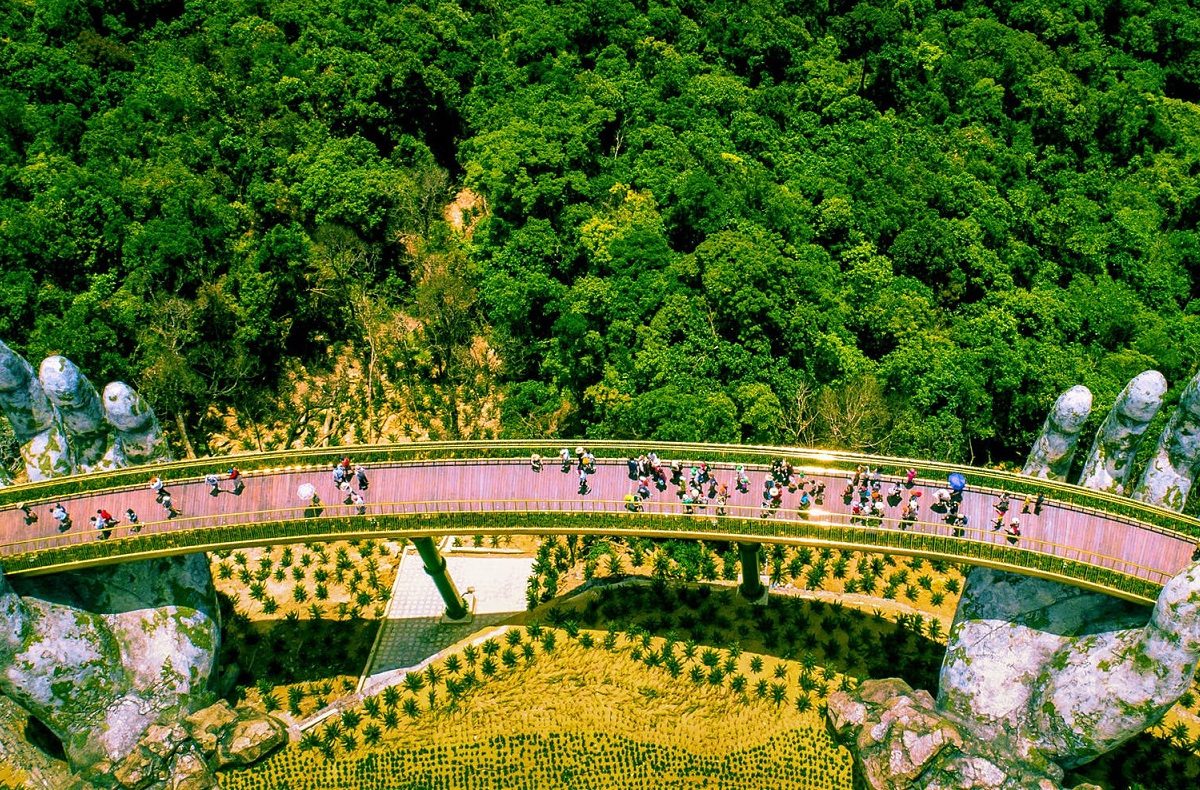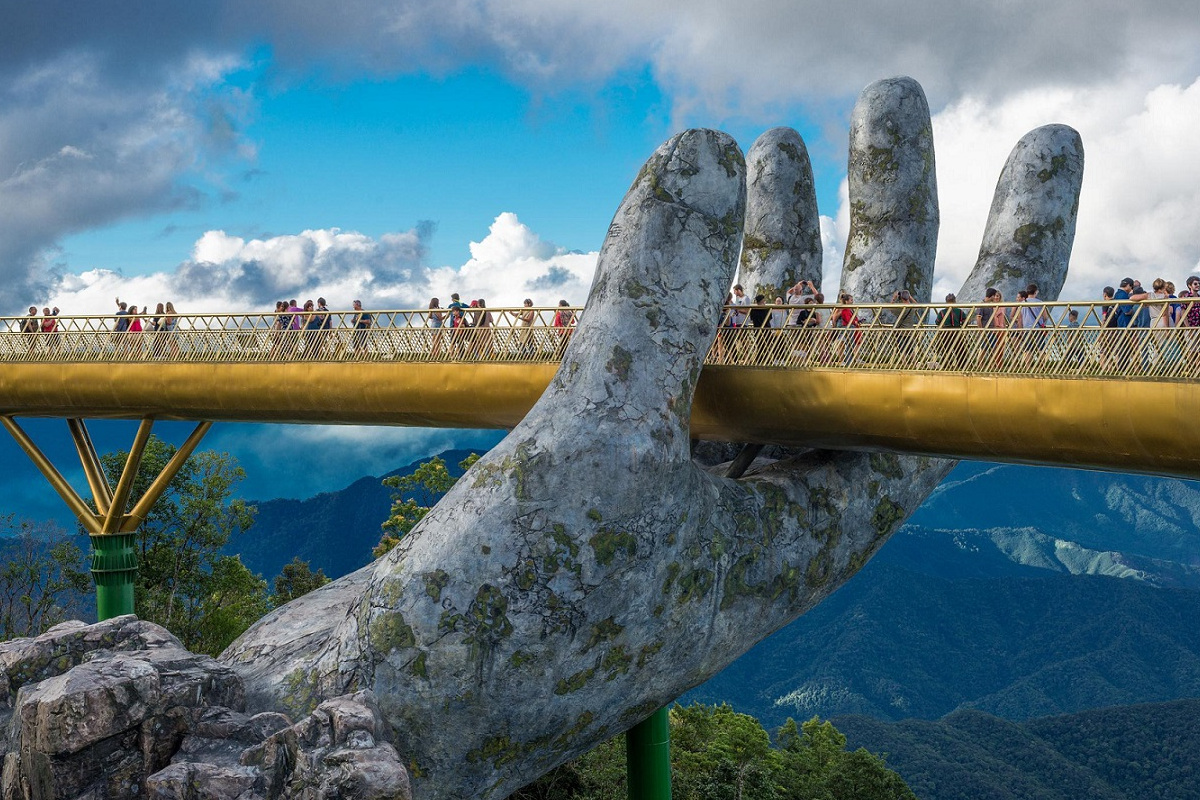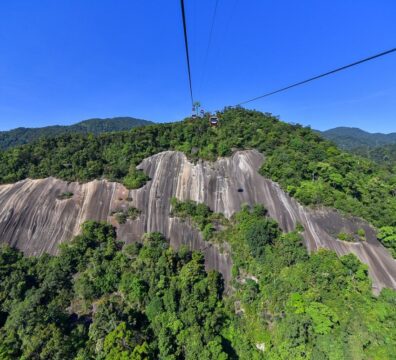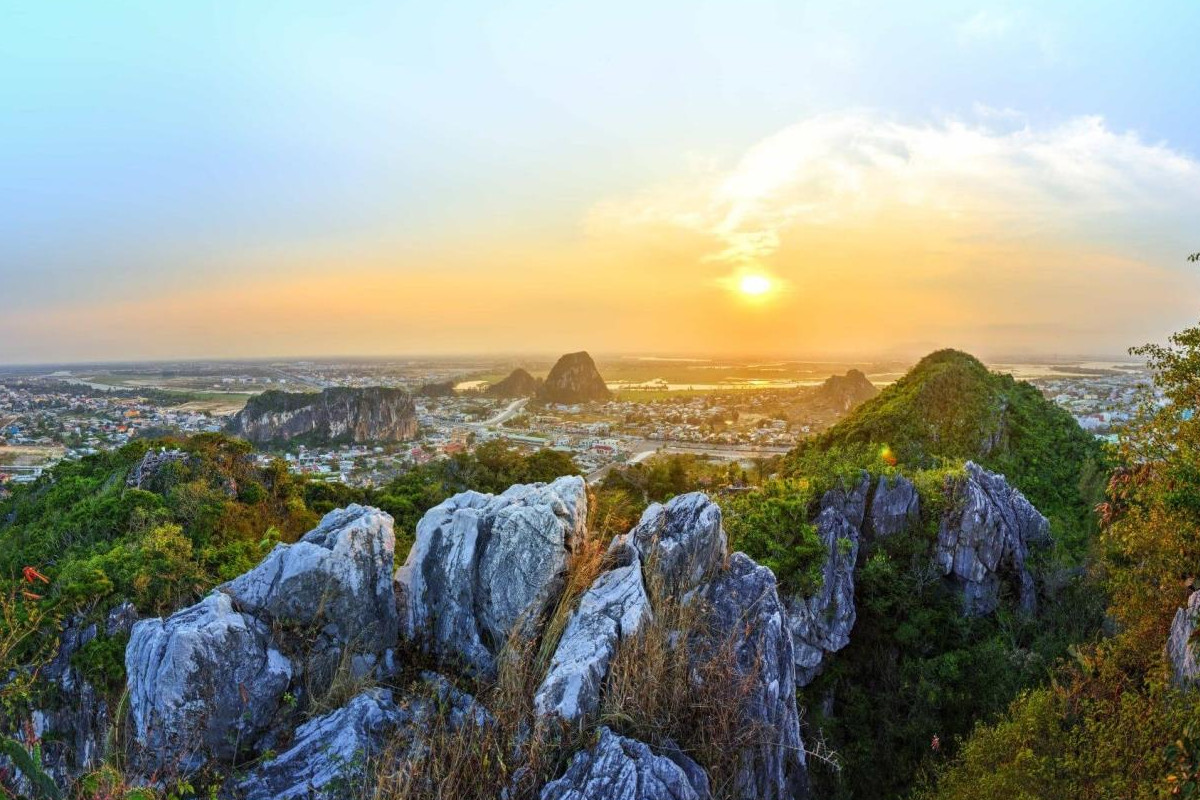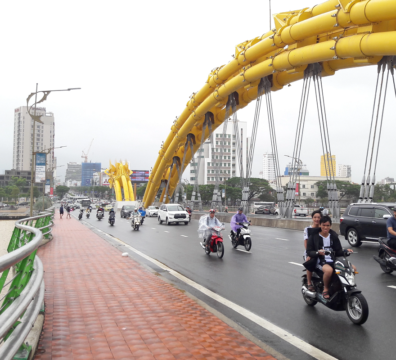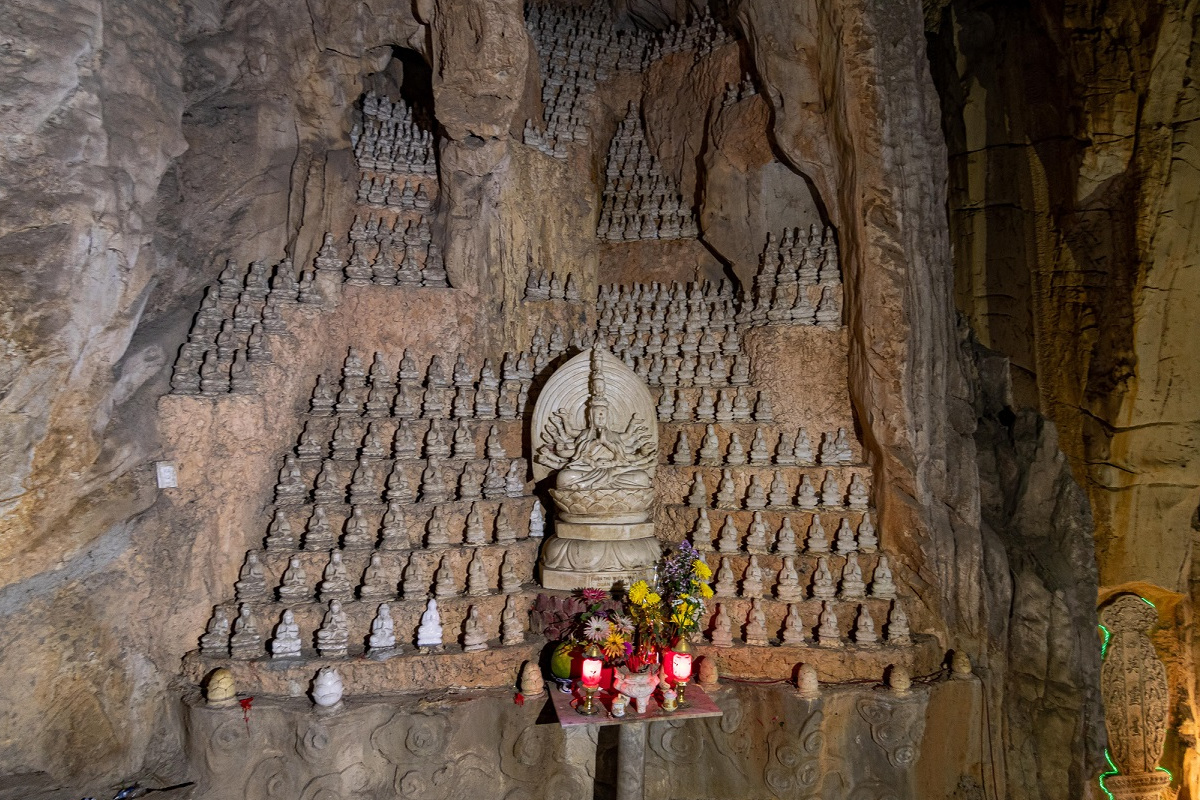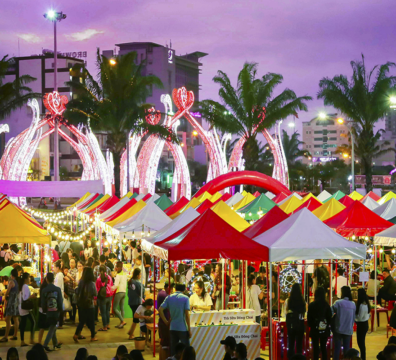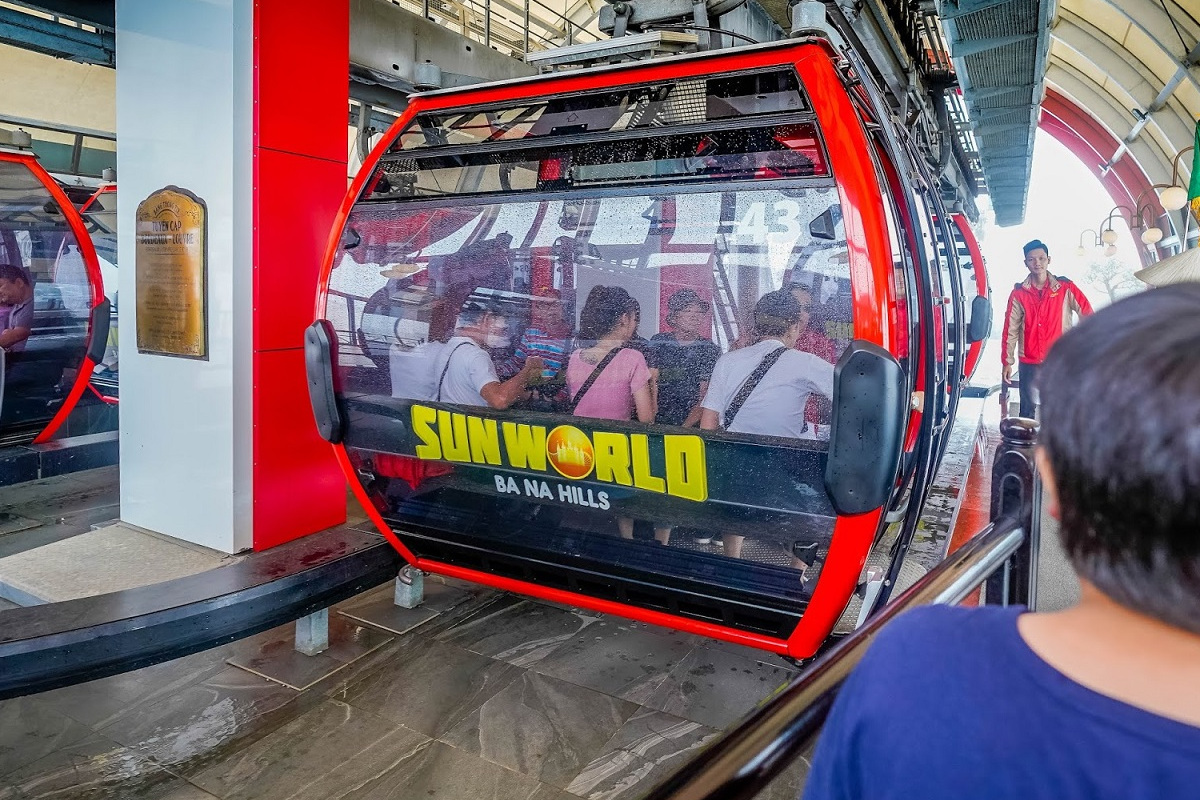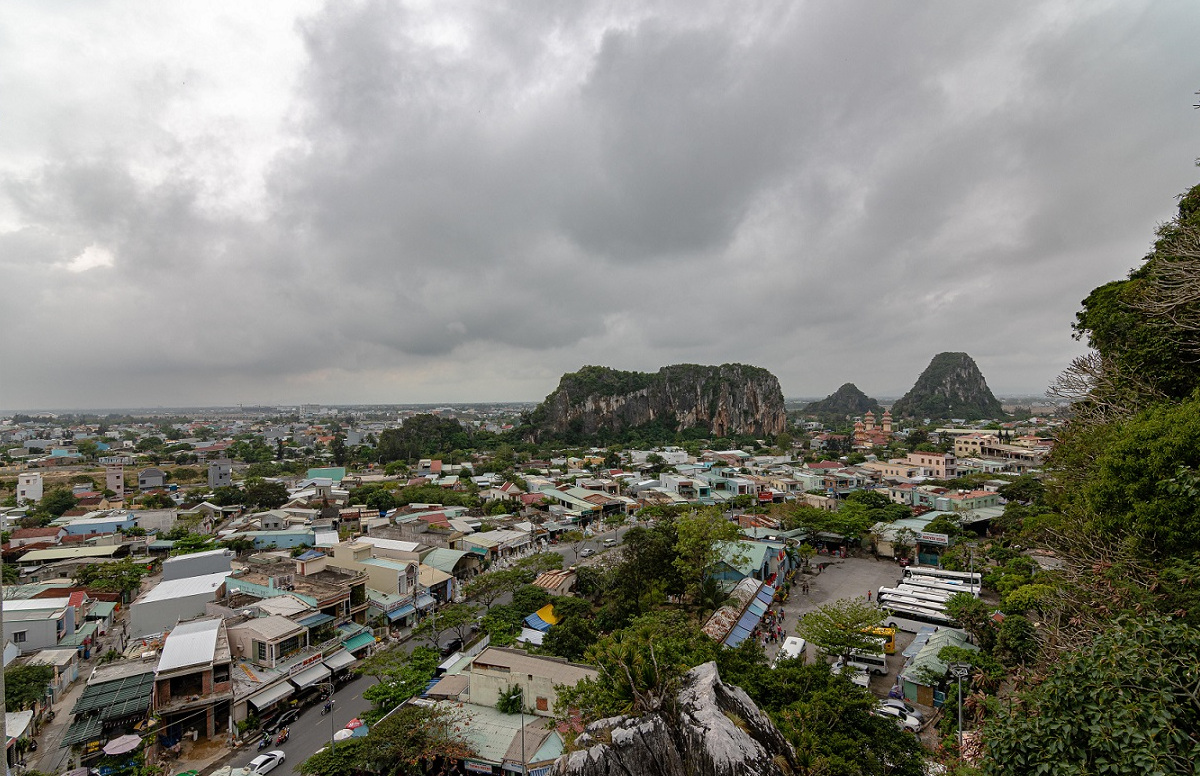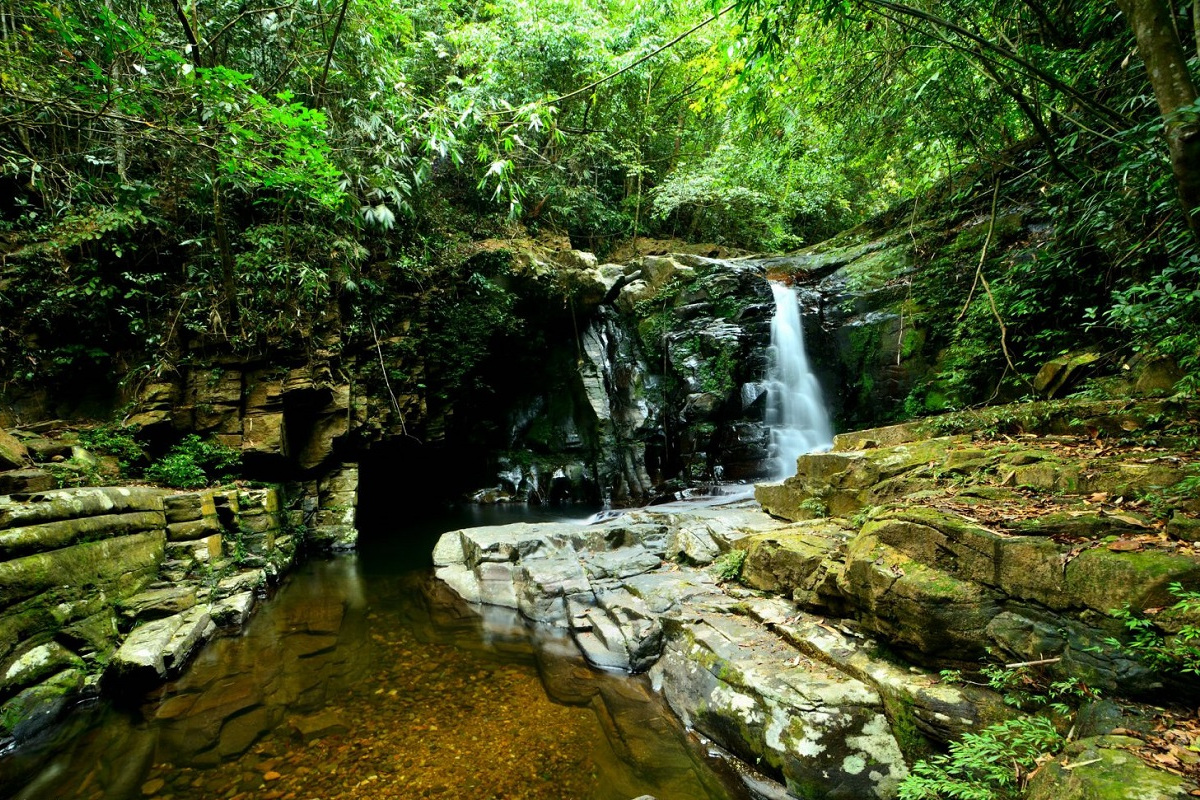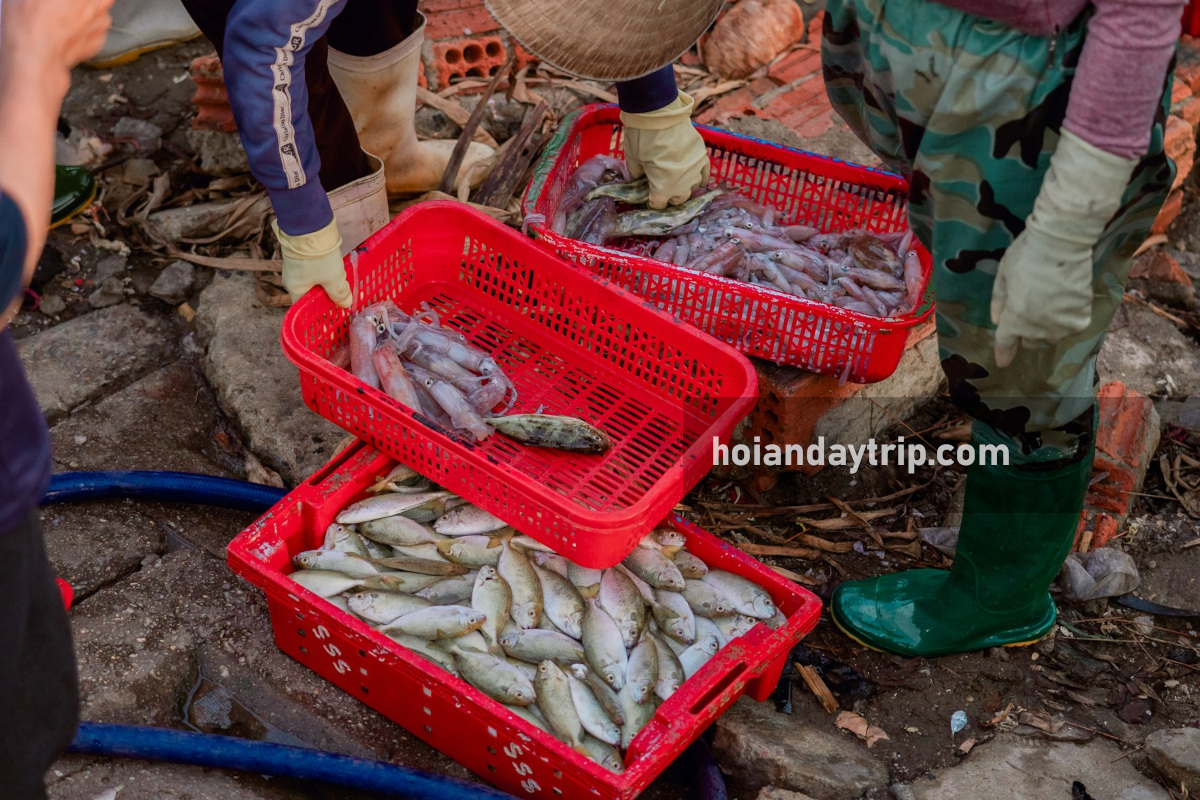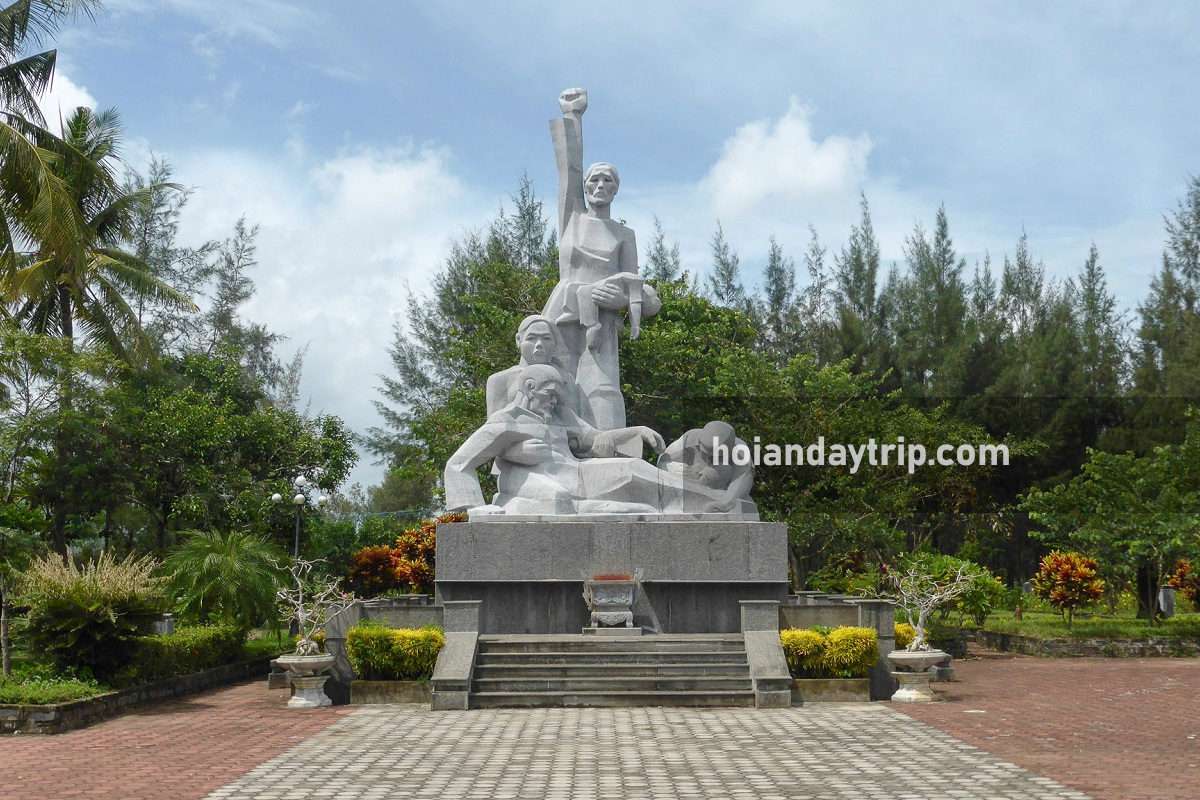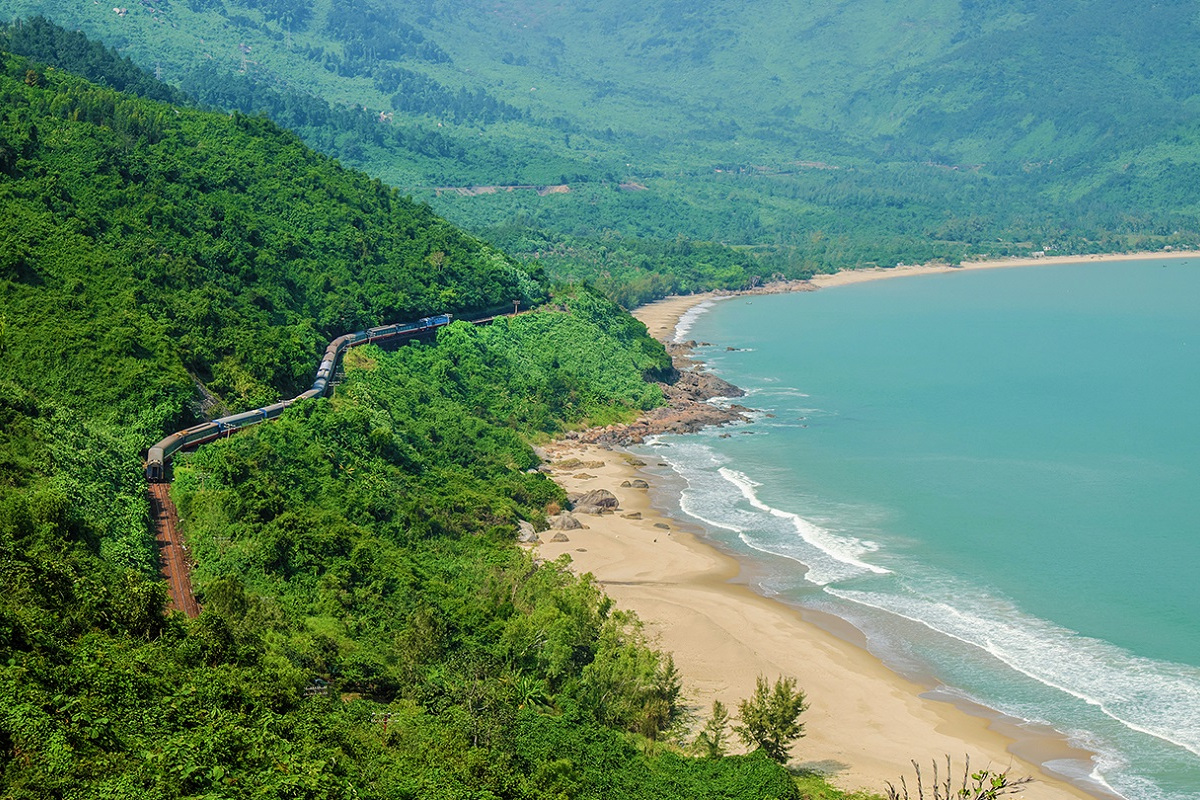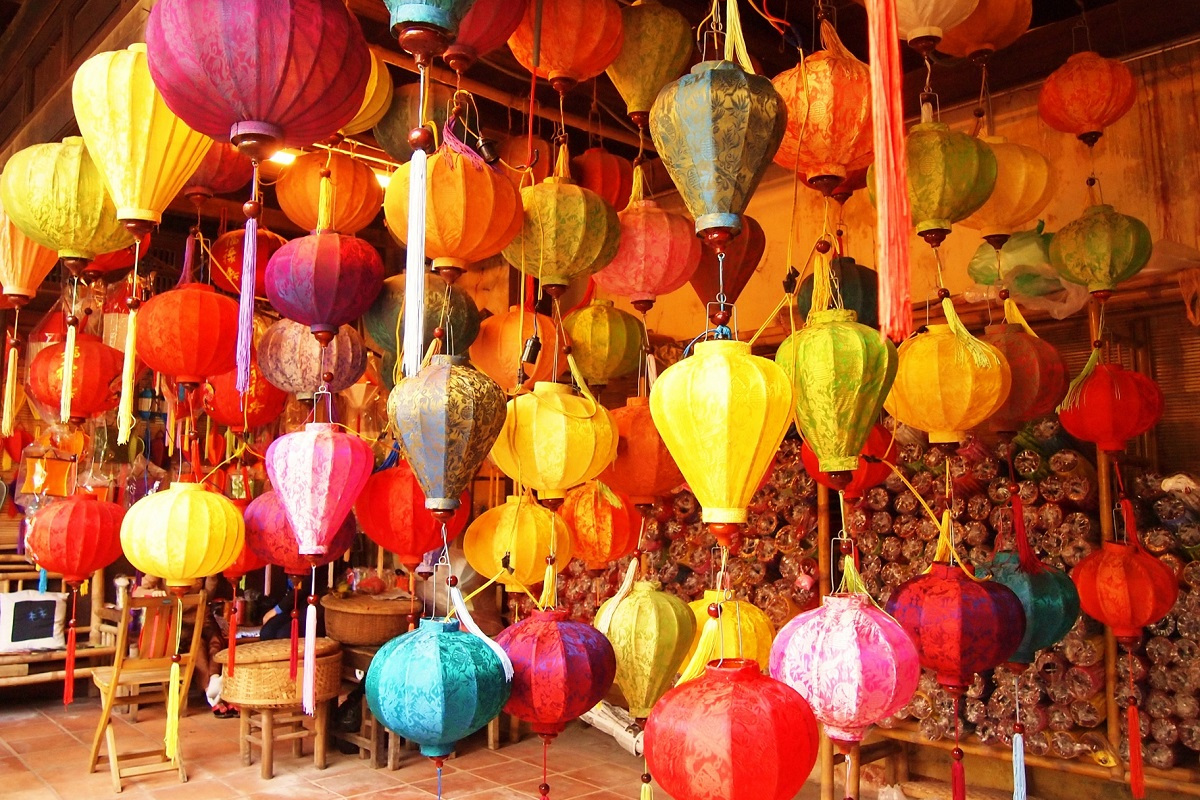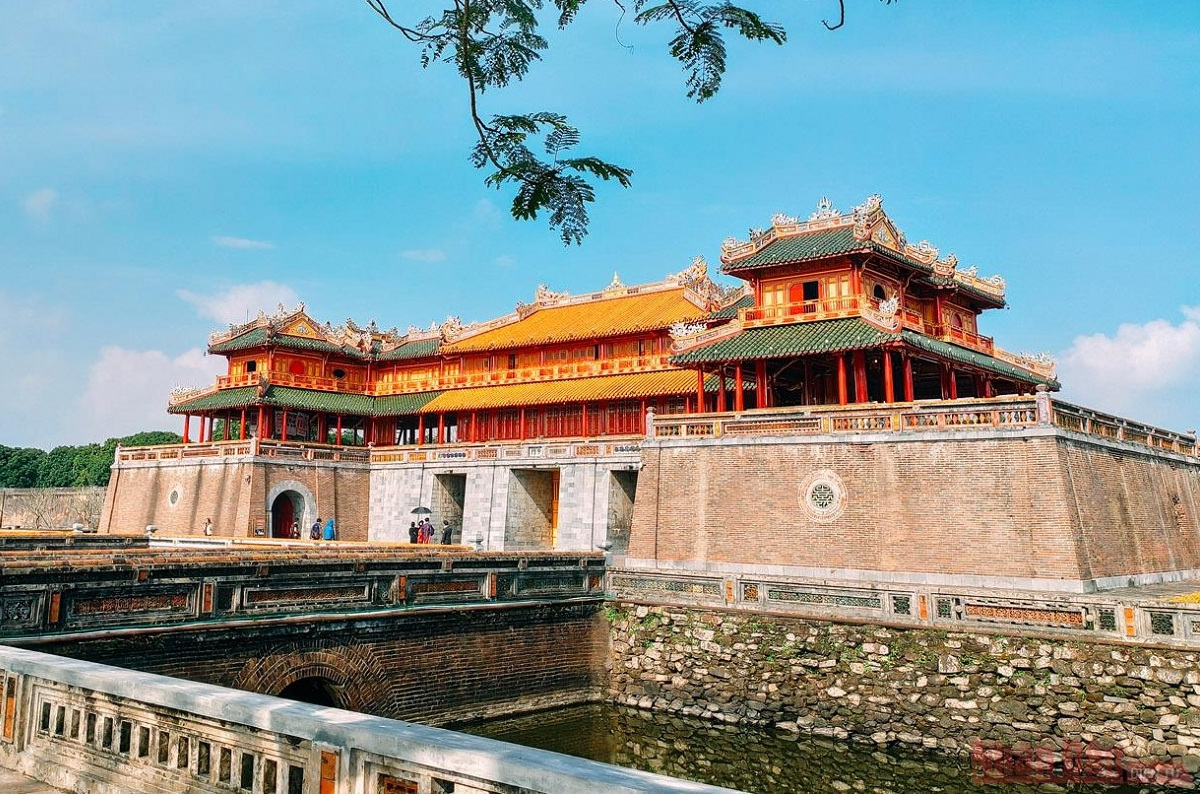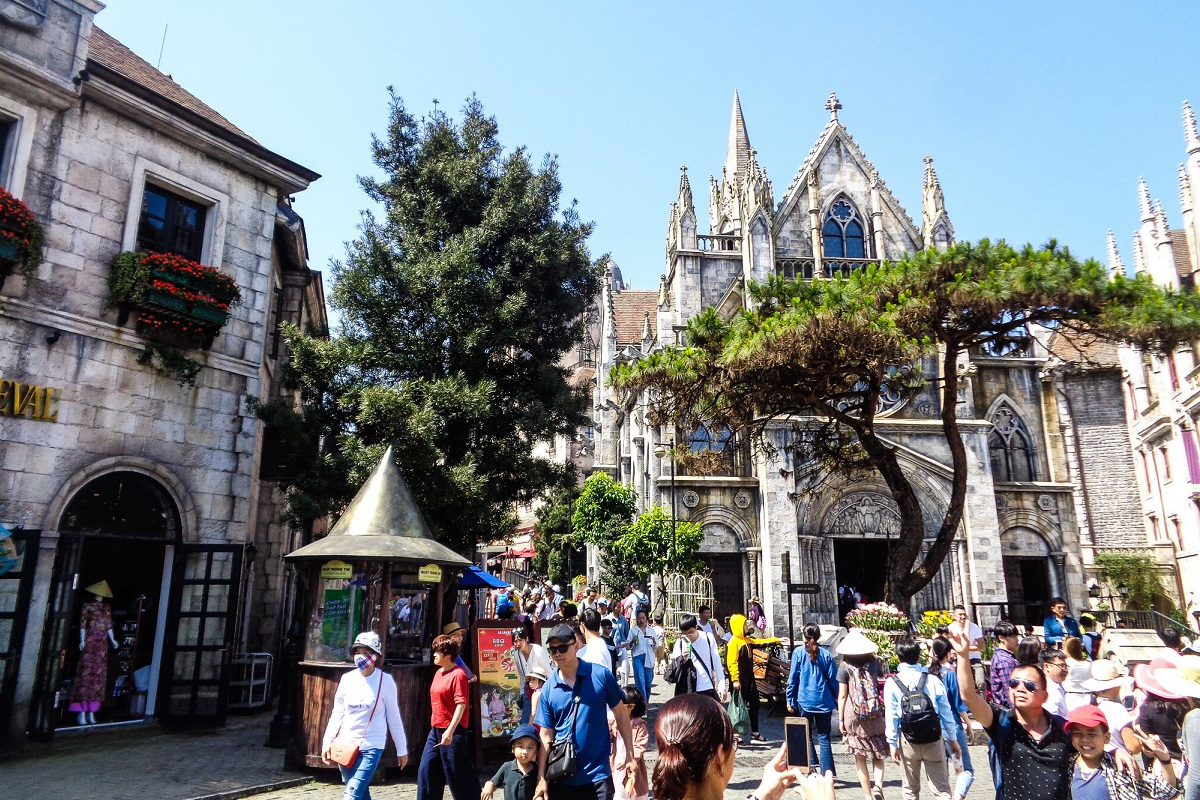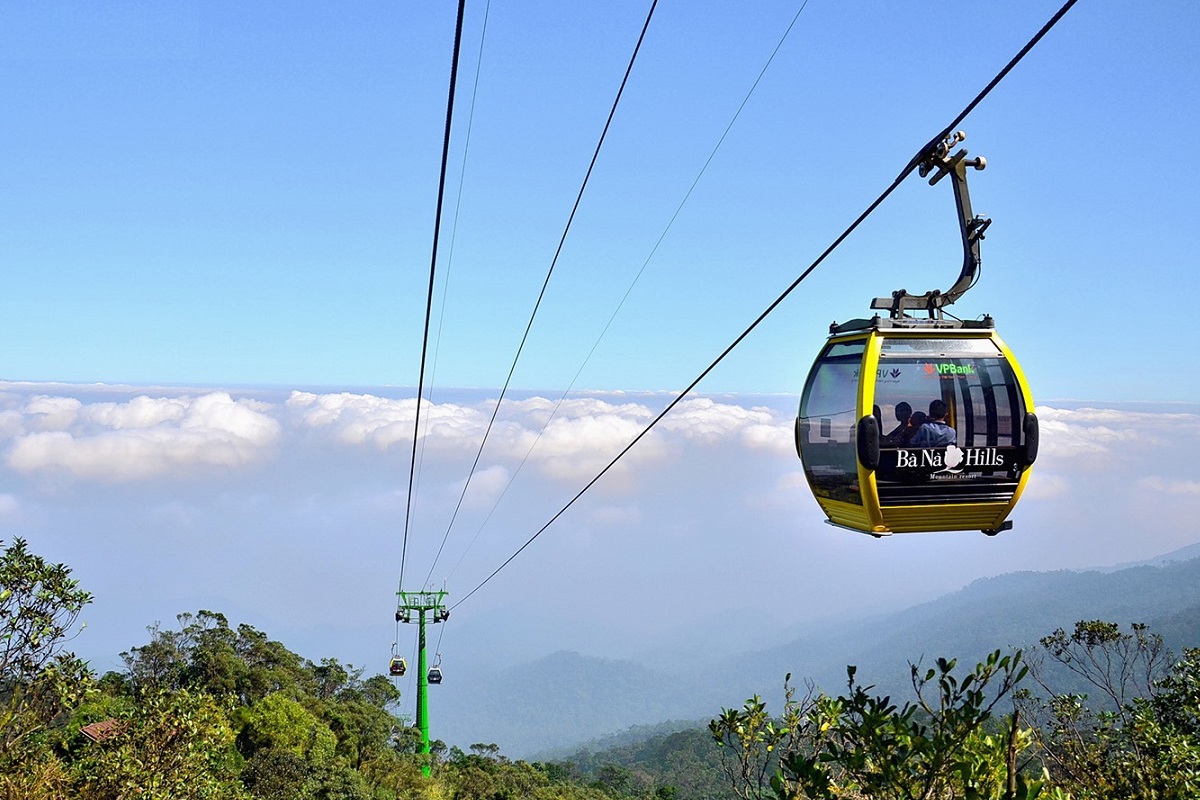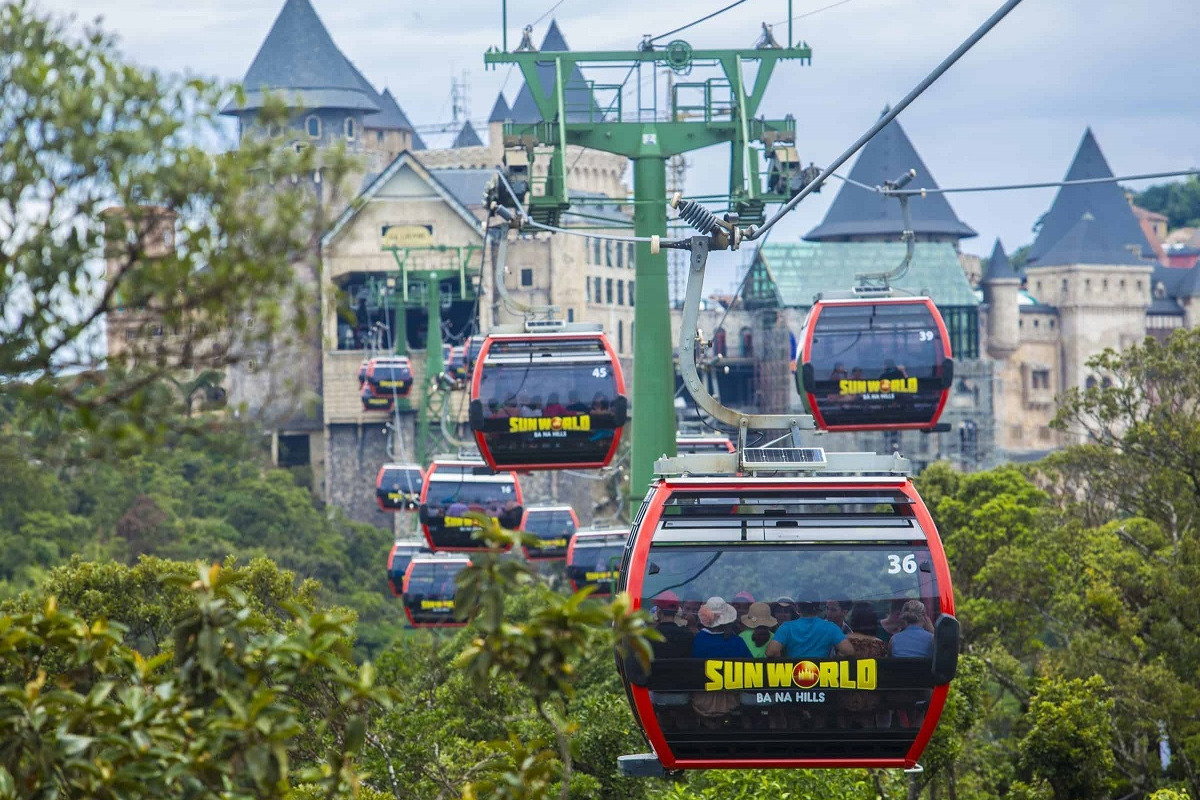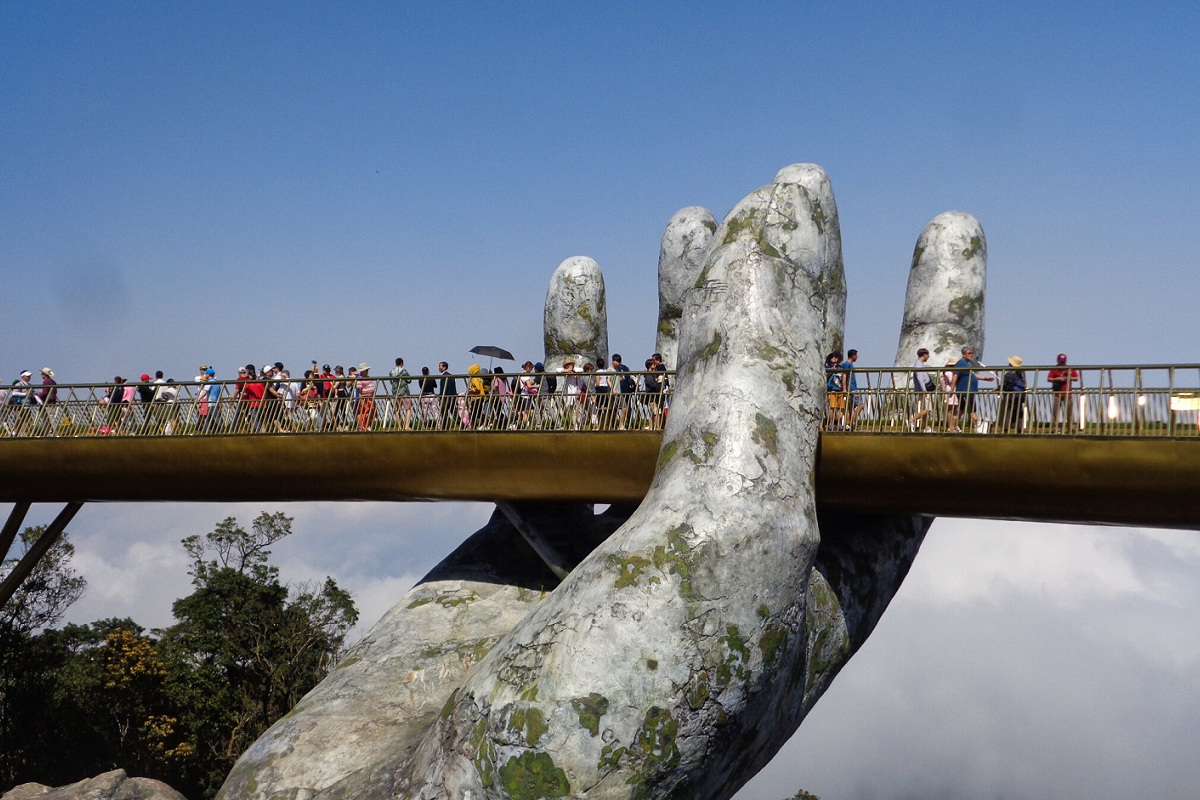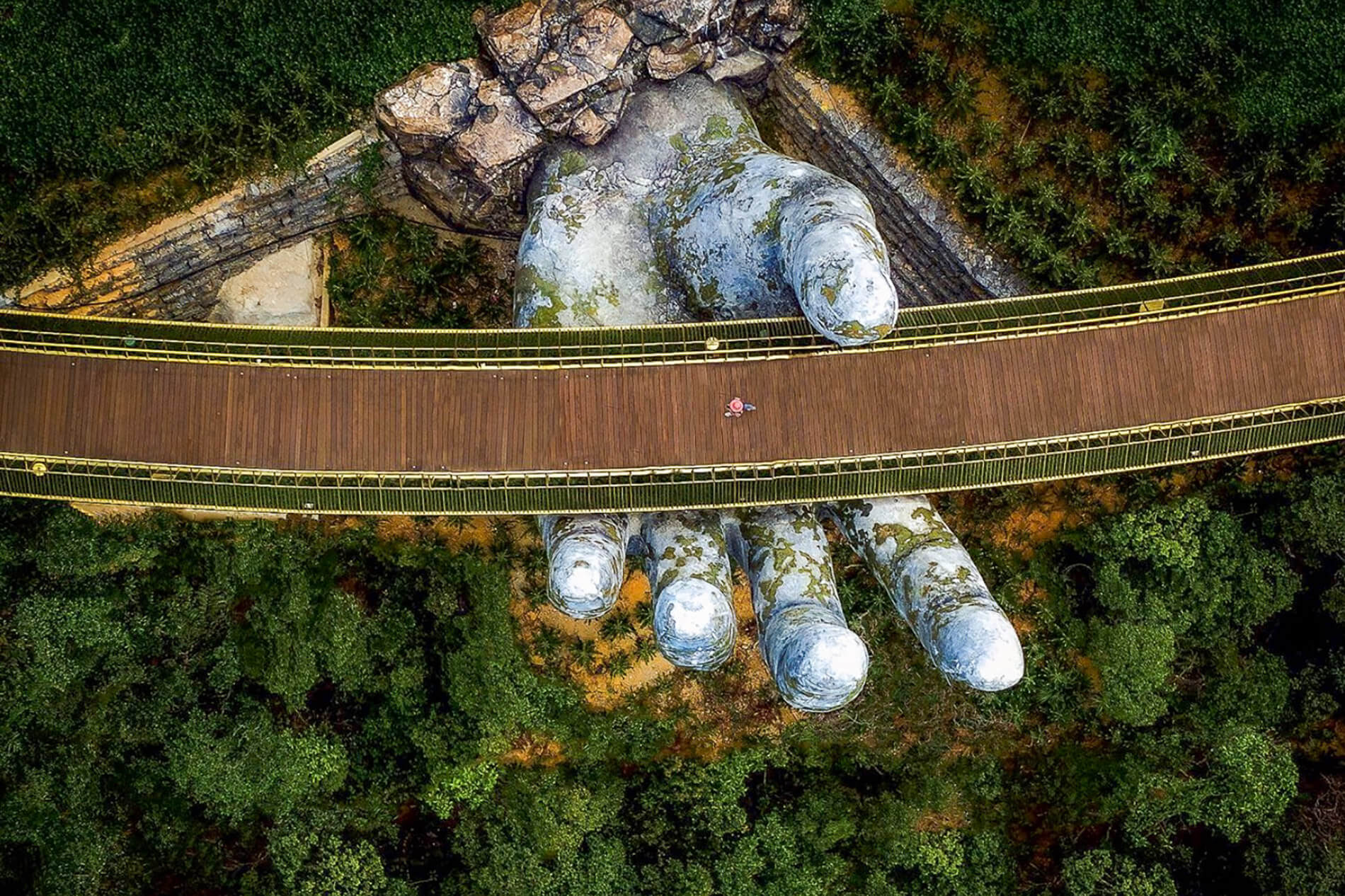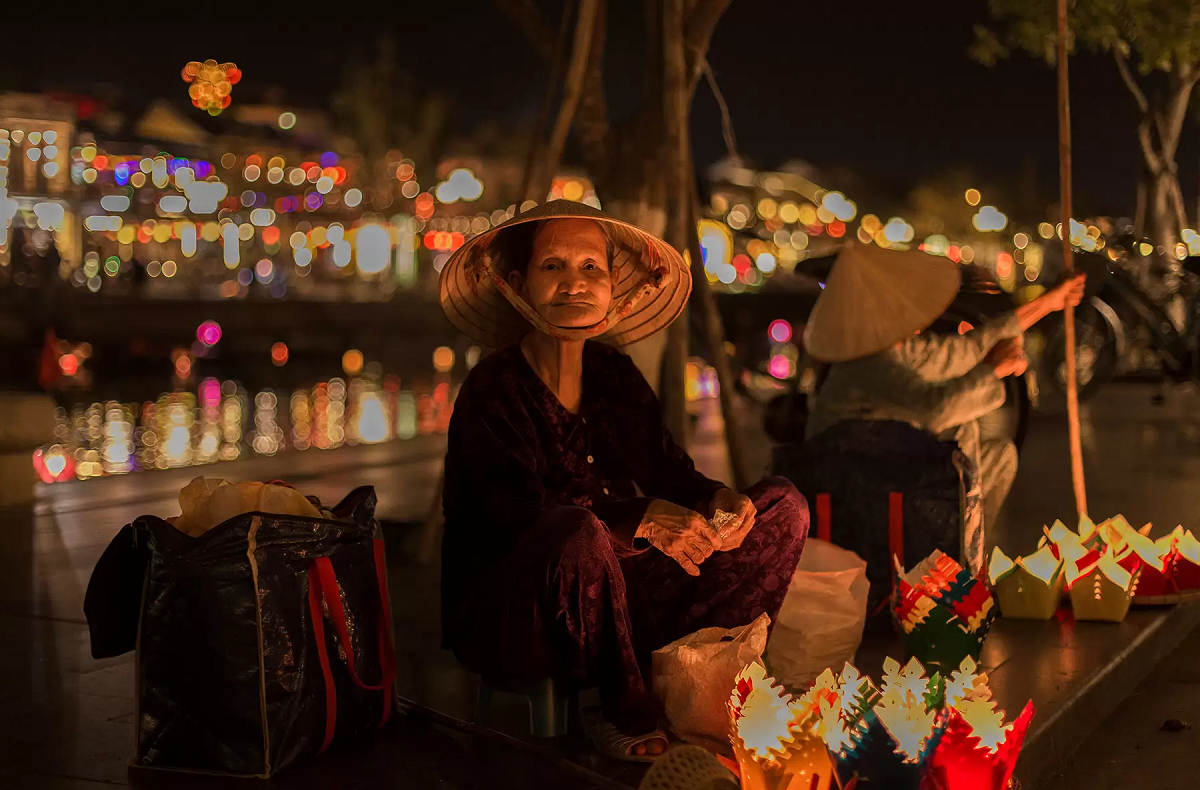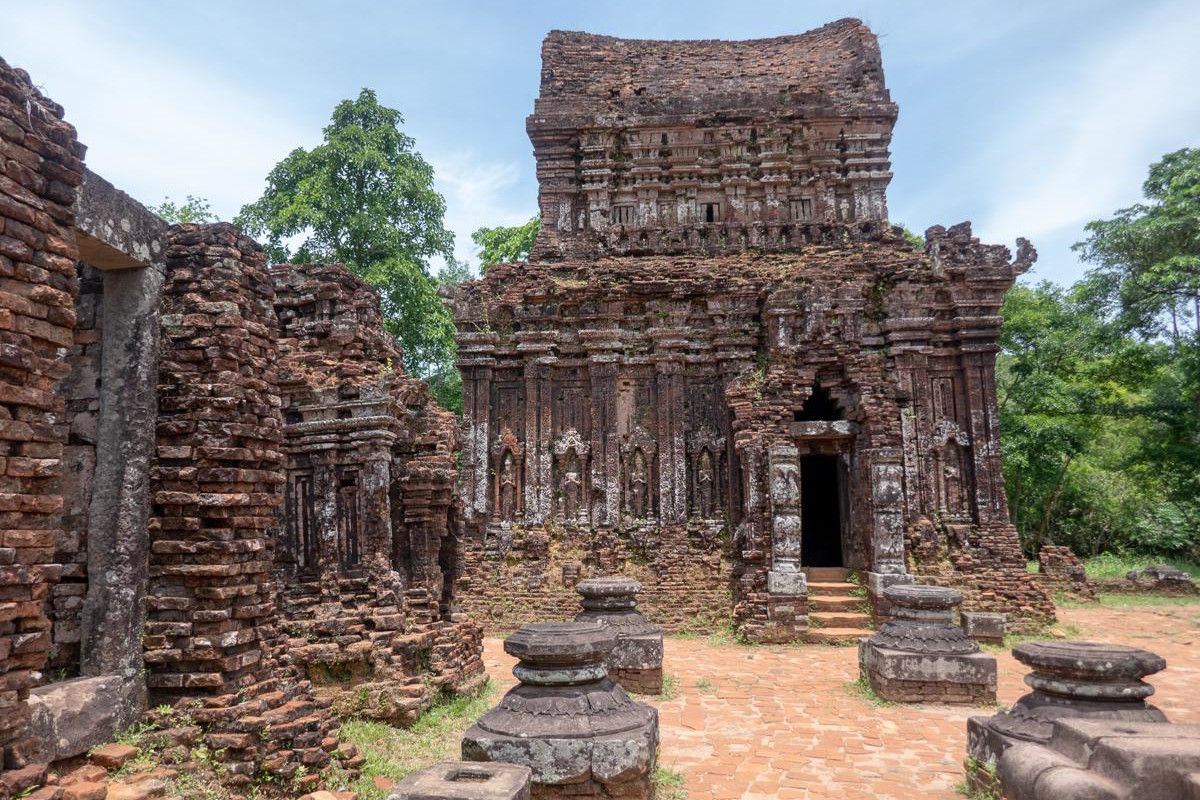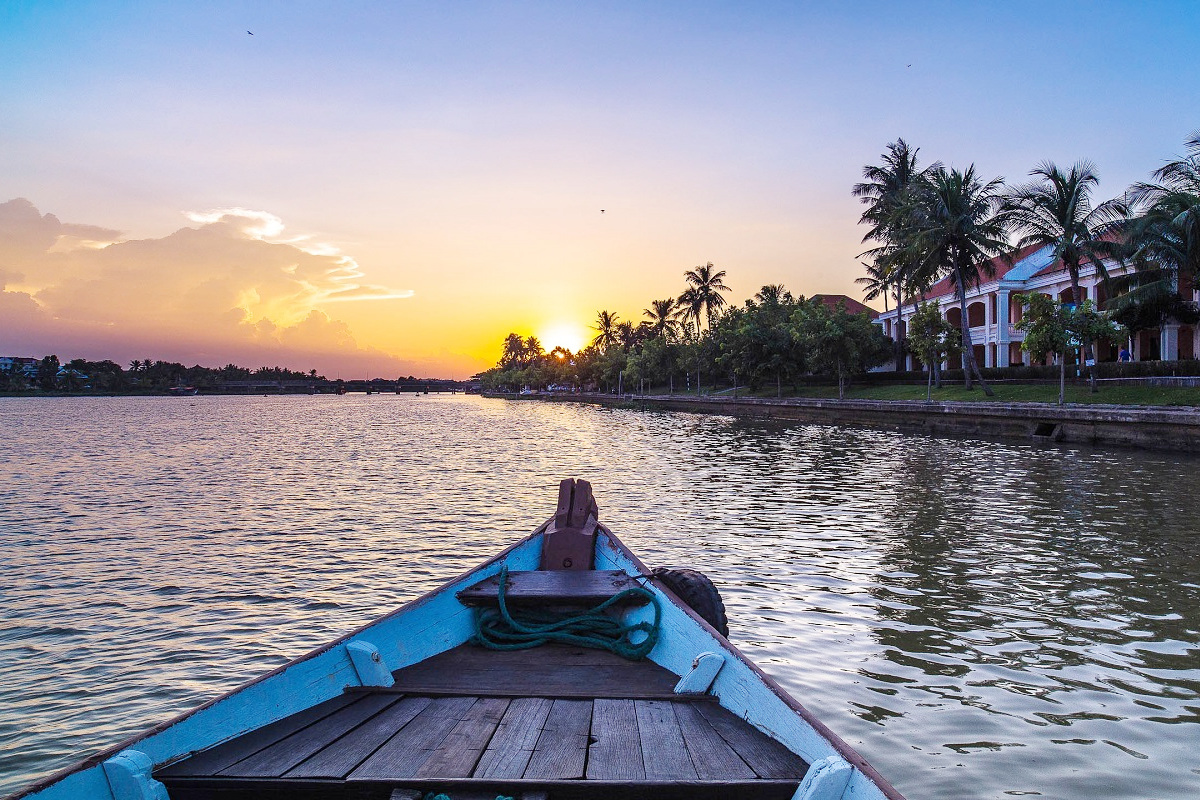Da Nang became a French protectorate on 3rd October 1888, under the name “Tourane”. By the Han river, the colonists designed a grid of streets with public buildings, a city hall, a market, train, and a church. Over time, these planned quarters have formed the old town (historic core) of the city. Among them, there are some constructions that are still in use, including the church. It’s called “Da Nang cathedral” and right now, is a holy place of worship for locals who have practiced teachings of Jesus Christ. Many tourists also come here to take pictures and learn about the colonial heritage or the faith of citizens. Being close to other must-see attractions in Da Nang’s centre and by main roads, it’s always in the itinerary of city tours. In this article, everything about Da Nang pink church is provided.
Read also:
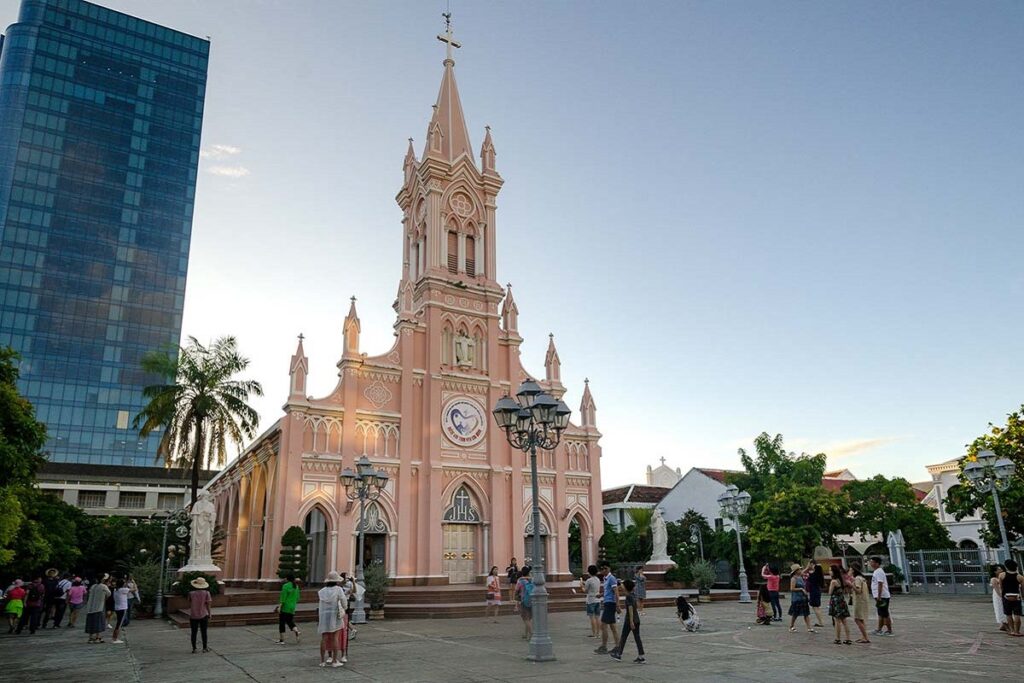
Table of content
- 1 What is the Da Nang Cathedral?
- 2 Introduction of Christianity in Da Nang Region
- 3 History of Da Nang Cathedral
- 4 How to Get to the Da Nang Cathedral
- 5 Da Nang Pink Church Opening Hours
- 6 Da Nang Cathedral Mass Times
- 7 In the Surroundings of the Da Nang Cathedral
- 8 Guided Da Nang City Tour
- 9 Da Nang Cathedral on Google Maps
- 10 Related Posts
- 11 Non Nuoc Beach: The Famous Beach of Da Nang
- 12 How to Get from Da Nang to My Son Sanctuary
- 13 Bach Ma National Park: Hiking, Trekking in Da Nang and Hoi An
- 14 Am Phu Cave (Hell Cave) – Things to Do in Da Nang
- 15 Asia Park and Sun Wheel in Da Nang (Sun World Da Nang Wonders)
- 16 How to Get to Golden Bridge from Da Nang
- 17 Da Nang Food Specialties: What to Eat in Da Nang
- 18 How to Visit Golden Bridge Vietnam
- 19 Da Nang Shore Excursions: Guided Tours From Tien Sa Port
- 20 Han Market (Cho Han): Where to Shop in Da Nang?
- 21 Da Nang Cathedral (Da Nang Pink Church)
- 22 Things to Do in Ba Na Hills Besides Golden Bridge
- 23 Da Nang Half Day Tours
- 24 Da Nang Private Car and Driver
- 25 Da Nang and Hoi An Itinerary for Visitors Staying Overnight in Hoi An
- 26 Da Nang Things to Do: Guide to What to Do in Da Nang Vietnam
- 27 Da Nang Best Things to Do and Reasons
- 28 How to Get From Hoi An to Da Nang
- 29 Hoi An or Da Nang: Which is Better for First Time Visitor?
- 30 My Son Sanctuary Tour
- 31 Da Nang Best Area to Stay: Guide to Where to Stay in Da Nang
- 32 Da Nang Cave Tour: Best Underground Activities in Da Nang
- 33 Da Nang Best Time to Visit: Guide to Best Weather in Da Nang
- 34 Da Nang Weather by Month: Guide to Monthly Weather in Da Nang
- 35 What to Do in Da Nang At Night
- 36 Lang Co Vietnam Travel Guide
- 37 What to Do in Da Nang for 3 Days
- 38 My Khe Beach: A Complete Guide to Da Nang’s Best Beach
- 39 Da Nang Day Trips: Guide to Best Day Tours From Da Nang
- 40 Museums in Da Nang
- 41 Linh Ung Pagoda: Trio of Da Nang’s Holiest Mountain Temples
- 42 Da Nang Night Market: A Thing To Do in Da Nang at Night
- 43 Guide to Son Tra Mountain (Monkey Mountain) in Da Nang, Vietnam
- 44 Ba Na Hills Tour
- 45 Da Nang Cable Car
- 46 How to Get from Da Nang Airport to Hoi An
- 47 Da Nang to Hoi An: Best Da Nang Airport Transfer and More
- 48 Hai Van Pass Da Nang: Map, Route, Weather, History, Tour
- 49 Da Nang Attractions Guide: What to See in Da Nang Vietnam?
- 50 Guide to Lady Buddha (Goddess of Mercy) in Monkey Mountain, Da Nang
- 51 My Son Sanctuary Travel Guide
- 52 Da Nang Museum of Cham Sculpture
- 53 Dragon Bridge Da Nang: The Fire-Breathing Da Nang Bridge
- 54 Ba Na Hills Travel Guide: A First Timer’s Complete Guide
- 55 Golden Bridge Da Nang: A Guide to The Iconic Da Nang Bridge
- 56 Da Nang Bridge: A Guide to Famous Bridges in Da Nang
- 57 Ba Na Hills Cable Car: World Record, Cost, Reschedule, Map
- 58 Da Nang Mountain Temple: Marble Mountain’s Pagodas, More
- 59 Da Nang Caves: Underground World of the Marble Mountains
- 60 The Marble Mountains: Guide to Da Nang’s Iconic Mountain
- 61 Featured Tours and Experiences
- 61.0.1 Bach Ma National Park Tour from Hue
- 61.0.2 Bach Ma National Park Tour from Da Nang/Hoi An
- 61.0.3 Hoi An Sunrise Fish Market Tour
- 61.0.4 My Lai Massacre Tour
- 61.0.5 Golden Bridge/Ba Na Hills & Hoi An Tour
- 61.0.6 Hoi An Instagram Tour
- 61.0.7 Ky Anh Tunnel & Tam Thanh Mural Village Tour
- 61.0.8 Da Nang to Hue Motorbike Tour with Hai Van Pass & Easy Rider (1 Way)
- 61.0.9 Hue to Da Nang Motorbike Tour with Hai Van Pass & Easy Ride (1 Way)
- 61.0.10 Hue to Hoi An Motorbike Tour with Hai Van Pass & Easy Rider (1 Way)
- 61.0.11 Hoi An to Hue Motorbike Tour with Hai Van Pass & Easy Rider (1 Way)
- 61.0.12 Tra Que Vegetable Village Tour with Cooking Class
- 61.0.13 Ba Na Hills Half Day Tour from Hoi An
- 61.0.14 Marble Mountain & Hoi An Day Tour from Da Nang Port
- 61.0.15 Hue Day Tour from Chan May Port with Lunch
- 61.0.16 Marble Mountain & Hoi An Tour from Chan May Port
- 61.0.17 Ba Na Hills/Golden Bridge Tour from Da Nang Port
- 61.0.18 Ba Na Hills/Golden Bridge Tour from Chan May Port
- 61.0.19 Golden Bridge Private Tour with Ba Na Hills & Lunch
- 61.0.20 Ba Na Hills Afternoon Tour with Golden Hands Bridge
- 61.0.21 Ba Na Hills Private Tour with Golden Hands Bridge
- 61.0.22 Ba Na Hills Half Day Tour with Golden Bridge
- 61.0.23 Ba Na Hills Early Morning Tour to Beat the Crowds
- 61.0.24 Golden Bridge and Ba Na Hills Night Tour
- 61.0.25 Golden Hands Bridge Tour In Sunrise or Sunset (1/2 Day)
- 61.0.26 Cam Kim Island Bicycle Tour From Hoi An
- 61.0.27 Cham Island Tour From Hoi An (Group Tour)
- 61.0.28 Cham Island Tour From Da Nang (Group Tour)
- 61.0.29 Hoi An Vegetarian Food Tour
- 61.0.30 Hoi An Evening Walking Food Tour with Local Foodie
- 61.0.31 Private Hoi An Basket Boat Tour (Shuttle Bus, Bicycle, Bike)
- 61.0.32 Half-day Am Phu Cave Tour (Private)
- 61.0.33 Hoi An Countryside Tour by Electric Car or Bike
- 61.0.34 Da Nang Tour Package From Singapore
- 61.0.35 Hoi An Evening Tour From Da Nang with Lantern Boat Ride
- 61.0.36 Hoi An Walking Food Tour Through Laneways
- 61.0.37 My Son Sanctuary and Hoi An Old Town Tour
- 61.0.38 My Son Day Trip From Hoi An including Marble Mountains and Basket Boat
- 61.0.39 Half Day Hoi An City Tour With River Cruise
- 61.0.40 Son Tra Peninsula Tour with Marble Mountains (Private/Small Group)
What is the Da Nang Cathedral?
The Da Nang Cathedral (aka the Pink church of Da Nang, Da Nang rooster church) is the parish church of Da Nang city and diocese. The diocese has more than 70,000 believers, about 2,7% of the population in Da Nang and Quang Nam province, and 110 priests. This edifice has been used by local christians since its birth in mid-20th century. Within the heart of the city, today it is one of the landmarks that tourists love visiting and photographing.
Da Nang cathedral features a magnificent Gothic architecture, rising up to 70 meters. Its façade is pinky and trendy, giving it a nickname “the pink church” as many travelers know. This special characteristic makes it photogenic, and that’s why, it draws plenty of instagrammers (sure, so many posts then!). Louis Vallet (1869-1945), a French priest, was in charge of constructing it. He passed away and was buried in Vietnam. The interior of the church owns some fine stained-glass paintings and valuable decorations.
Fact: Da Nang cathedral is called “the Rooster church” by local people. The reason is that the French installed a rooster in its top for weather forecast (measuring wind power). Some other churches in Vietnam have the same nickname too, like in Da Lat.
Read also: The Lady Buddha in Da Nang
Introduction of Christianity in Da Nang Region
The Christianity was introduced by Europeans before the French captured and colonized Vietnam (in 19th century). In January 1615, two Jesuit missionaries led by Francesco Burzomi (Italian) and Diogo de Carvalho (Fortugese), and other Japanese christians came to Da Nang. Then, they moved to Hoi An – an international trading port to introduce their religion. Two years later, Francisco Pina priest also visited and stayed in Hoi An for a year. He returned to the town in 1621, and lived in Thanh Chiem village, 10km west of Hoi An today. This man later contributed to the formation of Vietnamese new written languages that are Latinized. The one becomes the national inscription of Vietnam (officially called “chu quoc ngu”) when Ho Chi Minh led people to gain independence.
The first church and local christian families were established in Hoi An. In 1625, Alexandre de Rhodes arrived in the town. Over the years, the number of believers increased and for some reasons, Minh Mang king banned the introduction of Christinality in the country in 1833. He also requested that all boats of Europeans had to stop at Da Nang before moving further to Hoi An. Growth of the religion in the area slowed down. This decision led to a decline of commerce in the town.
Discrimination and prohibition against Christianity and believers reached the peak in 1885. At that time, many christians lost. In Tra Kieu village, 50km away from Da Nang, surviving christians hide in a mountain and then the Marian appeared to rescue them from killers. Nowadays, this site becomes holy for pilgrims.
In the 1950s and 1960s, particularly after the first Indochina war, christians moved from the north of Vietnam to Da Nang. In 1963, the Da Nang diocese was officially established. One third of the parishioners were new norther inhabitants.
Read also: My Khe Beach Travel Guide
History of Da Nang Cathedral
The Cathedral of Da Nang diocese was built from February 1923 to 10th March 1924. Up to present, this is still the only French Catholic church in the city. Louis Vallet (1869-1945), a French priest, was in charge of constructing it, in an empty piece of land by Rue de Musée (the Museum road). He performed holy ceremonies here in 1922, after moving from a small church in Da Nang’s outskirts. In 1927, he left Da Nang and went to Nha Trang, another beach city to the south of Vietnam. There, once again, he had the duty to build a parish church that is called “Nha Trang cathedral” today. Due to its main material as stone, locals named it “the Stone church”. In 1946, he died in Nha Trang and his tomb was constructed by the cathedral.
Although designed by Louis Vallet, the construction was under Vietnamese artisans and engineers from Kim Bong village in Hoi An. In the peak time, there are about 300 people and 5,000 bamboo used for scaffolding. The cost is 20,000 VND French Indochina piastre, according to some reliable sources.
Read also: Ba Na Hills Travel Guide
How to Get to the Da Nang Cathedral
Location of Da Nang Pink Church
Da Nang pink church sits within an urban block surrounded by Tran Phu street (front), Yen Bai street (back), Tran Quoc Toan and Nguyen Thai Hoc streets. Its address is 156 Tran Phu St, Hai Chau 1 ward, Hai Chau district, Da Nang city. This colonial building is just one kilometer away from Cham museum and the Dragon bridge, and 1,5 kilometers to Son Tra Night market. The distance from Da Nang international airport to it is double, 3 kilometers.
Walking
Travelers can walk if staying in a hotel that is near the Pink church (particularly, the area between the Han river bridge and the Dragon bridge). In a walking distance, it’s possible to see other attractions of Da Nang too, including the Han market – a buzzing multi-level market with a diverse merchandise. Not far away, the Museum of Cham sculpture is a self-guided walking tour for many people. In the surroundings of the Da Nang cathedral, there are so many restaurants, eateries, and vendors selling local food dishes. So, no surprise that foodies also plan to visit. Sure, they travel by foot. Remember to be careful while walking across a road.
By Car and Taxi
Thanks to the city’s downtown location, it’s so convenient to get to the Da Nang cathedral by car and taxi. Keep in mind that visitors have to enter the church by the back gate, not the entrance on Tran Phu street. If also plan to visit other must-see places in Da Nang, such as the Lady Buddha or Marble Mountains, hiring a car may be cheaper. Text us in whatsapp number +84968009827 to ask for more details and reserve.
By Bus
At the present, there is only one public bus dropping off passengers at the Da Nang cathedral. It is R16 bus, running from Kim Lien to the Vietnam-Korea university. Its operational hours are between 6 am and 7 pm daily, and the frequency is 15 minutes. In the city centre, this bus picks up and drops off at points along Dien Bien Phu St, Ly Thai To St, Hung Vuong St, Ngo Quyen St, Ngu Hanh Son St, Le Van Hien St. Ticket price of public transportation in Da Nang is also low cost, same to everywhere else around the country.
By Motorbike
Like cars and buses, it’s really easy to reach the Pink church from everywhere in Da Nang city. Parking is just by the back gate (“real entrance”) on Yen Bai street. The fee is 5,000 VND.
Da Nang Pink Church Opening Hours
According to the Da Nang diocese, from 2023, the Da Nang cathedral opens from 8 to 11:30 am and from 1:30 to 4:30 pm from Monday to Saturday, for visiting. On Monday, sightseers are allowed to enter this church from 11 am to 2 pm. Christians have the chance to go to the mass many times a week and especially, Sunday. Like other churches, the best time to visit in the year is Christmas and new year. In the festival, people who don’t follow Christianity also come to see rich decorations and the atmosphere.
Da Nang Cathedral Mass Times
The Da Nang cathedral is a living church where local Christians and foreigners of all nationalities visit for the mass. This is the official schedule announced by the church:
– Monday to Saturday: morning mass at 5 am, evening mass at 5:15 pm
– Sunday: at 5:15 am, 8 am, 10 am, 3 pm, 5 pm, 6:30 pm.
– English mass is celebrated at 10 am on Sunday
– Mass for childrens takes place at 8 am on Sunday
Read also: Festivals in Da Nang
In the Surroundings of the Da Nang Cathedral
The Han Market
Han market is only 300 meters from the Da Nang cathedral. It’s the best known market in the city, thanks to its long history, prime location and a diversity of merchandise. Visitors can buy things to eat, both processed and fresh at ground level. Clothes, footwears, fabric, and household stuff are for sale upstairs. Outside, there are some gold and accessories shops where tourists can exchange money. See everything in Han market travel guide.
Restaurants near the Da Nang Cathedral
There are so many places to eat in the surroundings of the Da Nang cathedral. Within the heart of the city, street food vendors are not legally allowed to be around this area. Eateries where local people often come to eat, sell diverse food options. Travelers can walk along streets, and sure, it’s easy to see them. Many visitors like to try pho – Vietnamese national noodle soup at the crossroad of Tran Phu and Tran Quoc Toan streets. The owner of that venue comes from Hanoi where the dish exactly is borned. Da Nang’s local foods like banh xeo pancake, nem lui (grilled pork lemongrass), banh beo (steamed rice cakes in small bowls) are found without difficulties and challenges. The best classic and professional restaurants line the riverfront, Bach Dang road.
Coffee Shops near the Da Nang Cathedral
Vietnamese drink coffee everyday. In the morning, afternoon or evening, coffee shops near the Pink church are busy. By the Han market, visitors can go to communist-style Cong ca phe, to taste authentic local brewing coffees. Iced coconut milk coffee actually was first made in one of the shops within this chain. Local brands are more attractive to local people. The quickest way to realize it is looking at drinkers. If they are mostly Vietnamese, the place absolutely deserves a visit.
Read also: Hai Van Pass Travel Guide
Guided Da Nang City Tour
The itinerary of most guided full-day Da Nang city tours includes the Pink church. Visitors usually stay here for 30 minutes, and then walk to the Han market. Other attractions that are on the same day are the Museum of Cham sculpture, Linh Ung pagoda on Son Tra peninsula and its 67-meters Lady Buddha, the Marble mountains and Non Nuoc stone carving village. My Khe beach – the loveliest beach in the city, Tho Quang beach – the beach of basket boats and fishing boats or the city’s fishing harbour where hundreds of fisherman boats stay or spots of scenic natural beauty are stopovers sometimes. At least, travelers can see them from the car or bus. If get around Da Nang by motorcycle, sure it’s easier to stop and take pictures. You can check details of Da Nang at a glance and Da Nang discovery, and decide the best pick for yourself.
About Da Nang half day tours, travelers can consider to climb the top of the Marble mountains (Five-element mountains) and marvel at the tallest Lady Buddha statue in Vietnam. For those who are seeking an adventure, exploring the caves and caverns only inside marble hills is a good choice. In Am Phu cave, besides enjoying incredible formations of Mother nature, visitors also learn about Buddhist philosophy about death and karma. During the Vietnam war, it’s hiding place and a field hospital for communists. Huyen Khong cave, the large cave with holy temples and a “fall of light”, is on the trip. See more details in Da Nang cave tour.
Da Nang Cathedral on Google Maps
Related Posts
Non Nuoc Beach: The Famous Beach of Da Nang
Besides the Golden hands bridge – a global hit, Da Nang city also has beautiful beaches. If looking for somewhere great to stay and have a slow holiday, Non Nuoc
How to Get from Da Nang to My Son Sanctuary
Known as ‘the Angkor Wat of Vietnam’, My Son sanctuary boasts of its sophisticated temples dating back from 4th century. Sadly, in 14th century, it’s abandoned in the forests. Today,
Bach Ma National Park: Hiking, Trekking in Da Nang and Hoi An
Two best places for trekking and hiking in and near Da Nang are Son Tra mountain (peninsula) and Bach Ma national park. Which one is better is actually personal because these
Am Phu Cave (Hell Cave) – Things to Do in Da Nang
Although in the Marble mountains – the most visited attraction in Da Nang, travelers often miss Am Phu cave. One of reasons is that it’s mentioned much online and not
Asia Park and Sun Wheel in Da Nang (Sun World Da Nang Wonders)
Have you ever seen the wheel of Da Nang? That is the Sun Wheel. It’s a part of greater Asia Park – an amusement park with a heap of fun
How to Get to Golden Bridge from Da Nang
The Golden Bridge (aka the Golden Hands Bridge) in Da Nang is a must visit attraction in Vietnam today. Many foreign travelers come to the city, just because they love
Da Nang Food Specialties: What to Eat in Da Nang
Da Nang is known as a food capital of central Vietnam. This city boasts many yummy dishes, prepared by distinctive recipes and some of them are famous all over the
How to Visit Golden Bridge Vietnam
The Golden Hand Bridge of Ba Na hills today is a dream place to visit for many travelers. Since it opened in June 2018, millions of people have set their
Da Nang Shore Excursions: Guided Tours From Tien Sa Port
Da Nang Vietnam today is one of stopovers for many cruises that travel from continent to continent, from country to country. It owns an ideal seaport to moor and it
Han Market (Cho Han): Where to Shop in Da Nang?
In the heart of Da Nang, the Han market is a popular place for visitors to buy something to bring home due to the diversity of merchandise. Back to history,
Da Nang Cathedral (Da Nang Pink Church)
Da Nang became a French protectorate on 3rd October 1888, under the name “Tourane”. By the Han river, the colonists designed a grid of streets with public buildings, a city hall,
Things to Do in Ba Na Hills Besides Golden Bridge
According to local authorities, 50% of visitors coming to Da Nang and Hoi An visit the Ba Na hills. In other words, that is nearly 10 millions of people. This
Da Nang Half Day Tours
In addition to day trips, travelers have many options of half-day tours in Da Nang to choose from. Not to spend a full day at different places, maybe far from
Da Nang Private Car and Driver
Your next holiday destination is Da Nang? You prefer to travel by yourself? Hiring a private car is one of the best options for you to explore with freedom, flexibility
Da Nang and Hoi An Itinerary for Visitors Staying Overnight in Hoi An
Da Nang and Hoi An are twin cities in the heart of Central Vietnam. Both are popular tourist destinations for either domestic or international visitors, and share many similarities. Due
Da Nang Things to Do: Guide to What to Do in Da Nang Vietnam
Unquestionably, Da Nang deserves a holiday trip from all types of traveller. Firstly, due to the weather. It has a longer sunny time than the north but less hot than
Da Nang Best Things to Do and Reasons
Da Nang is the largest tourist center in Central Vietnam. It owns fascinating natural and cultural places that attract both Vietnamese and foreigners. In the busiest year, this city of
How to Get From Hoi An to Da Nang
Da Nang is the neighbouring city of Hoi An. It's the capital of Central Vietnam and has the most important (busiest) transport hubs of the region, such as airport, train
Hoi An or Da Nang: Which is Better for First Time Visitor?
Da Nang and Hoi An are located in Central Vietnam, with a distance of roughly 30 km. To the north, Da Nang is the capital city of the region, with
My Son Sanctuary Tour
My Son Sanctuary is a Unesco world heritage site, attracting 450,000 visitors in recent years. It’s the best remains left by the fallen Champa Kingdom which ruled a part of
Da Nang Best Area to Stay: Guide to Where to Stay in Da Nang
In the Central coast, Da Nang has an area of 1,285 km2 and population of 1,134 people, making it become Vietnam’s 4th largest city. It plays an important role in the
Da Nang Cave Tour: Best Underground Activities in Da Nang
Different from Hue and Hoi An, Da Nang has limestone caves and grottoes. All of them are within the Marble Mountains (Ngu Hanh Son), a complex of 5 amazing hills
Da Nang Best Time to Visit: Guide to Best Weather in Da Nang
Da Nang is titled “Asia’s leading festival and event destination” by the World Travel Awards or Vietnam’s greenest city by the WWF. Its reputation comes from amazing natural mountain-to-sea sceneries,
Da Nang Weather by Month: Guide to Monthly Weather in Da Nang
In Central Vietnam, Da Nang has a tropical monsoon climate with two distinct seasons that each starts later than the North 2 months. Because of being shielded by the spectacular
What to Do in Da Nang At Night
Between the sunset and midnight, there are many things to do in Da Nang that travelers should know before getting to bed. Thankfully, different styles of traveling, budget or ages
Lang Co Vietnam Travel Guide
Lang Co was a lovely backwater town nestled at the foot of spectacular Hai Van Pass for some decades. Not yet widely known because of the popularity of beaches in
What to Do in Da Nang for 3 Days
Da Nang is a lovely coastal city in the middle of 3 Unesco world heritages Hue, Hoi An and My Son Sanctuary. This most worth-living municipality owns a poetic river
My Khe Beach: A Complete Guide to Da Nang’s Best Beach
Da Nang is a lovely seaside city with many beaches, and the best is My Khe. Located on the eastern coastline, it’s between little-known beaches near the foot of Son
Da Nang Day Trips: Guide to Best Day Tours From Da Nang
Centre and outskirts of Da Nang have incredible attractions where travellers need to spend many hours to get to and fully explore. There are the Ba Na Hills and Golden
Museums in Da Nang
Da Nang has many museums where visitors can see and learn a lot. Generally, their exhibitions have different themes, varying in stages of the history, groups of people (communities) having
Linh Ung Pagoda: Trio of Da Nang’s Holiest Mountain Temples
Linh Ung means “wishes answered miraculously” in Sino-Vietnamese. And it’s first used in 1841 to name a pagoda in the Marble Mountains by Thanh Thai, the 10th king of the
Da Nang Night Market: A Thing To Do in Da Nang at Night
Different from day markets in Da Nang, night markets are held open-air and on streets where traffic is active during sunny hours. A visit there provides the chance to understand
Guide to Son Tra Mountain (Monkey Mountain) in Da Nang, Vietnam
From My Khe Beach or Han River promenades, tourists can see a part of the Son Tra Mountain. Although being near the city center, natural forests on its slopes have
Ba Na Hills Tour
Ba Na Hills is one of the best attractions in Da Nang, and the country. Its full name is the Ba Na-Suoi Mo Tourist Area, made from “Ba Na hill
Da Nang Cable Car
No surprise that now, when travelers make the plan to tour around Vietnam, there are many cable car rides recommended. Some are top things to do in its cities. The
How to Get from Da Nang Airport to Hoi An
Located in the city of the same name, Da Nang airport is the nearest airport to Hoi An. So, if travelers want to see an extremely-colorful Lantern festival or try
Da Nang to Hoi An: Best Da Nang Airport Transfer and More
If traveling to Hoi An by air, train and cruise ship, visitors will come to Da Nang first and then have a transfer. The largest city of Central Vietnam holds
Hai Van Pass Da Nang: Map, Route, Weather, History, Tour
Truong Son or Annamite Range is the most dramatic mountain ridge in Vietnam. When it juts out into the sea, spectacular Hai Van Pass is formed. This amazing sculpture of
Da Nang Attractions Guide: What to See in Da Nang Vietnam?
Da Nang is the capital city of the Central region, and one of the most attractive destinations to tourists in Vietnam. It’s established by French colonists and called by them
Guide to Lady Buddha (Goddess of Mercy) in Monkey Mountain, Da Nang
From the East coast, visitors can see an enormous white statue with the mountain backdrop, that is the Lady Buddha Da Nang. Located in the ground of Linh Ung Pagoda,
My Son Sanctuary Travel Guide
My Son Sanctuary is a complex of Hindu temples and a Unesco world heritage site from 1999. It’s 40 km away from Hoi An and 70 km to the southwest
Da Nang Museum of Cham Sculpture
Da Nang Museum of Cham Sculpture is a highlight of the Han river waterfront. It’s established by French archaeologists to preserve intricate works of art of Champa kingdom, which ruled
Dragon Bridge Da Nang: The Fire-Breathing Da Nang Bridge
Praised to be the world's 30 most unique bridges recently, Dragon Bridge became the new icon for a Han river bridge in Da Nang. Spanning from the 100-years-old Cham Museum,
Ba Na Hills Travel Guide: A First Timer’s Complete Guide
50% of visitors to Da Nang plan to visit Ba Na Hills in their itinerary. It’s larger for first timers who may know about its inspirational Golden Bridge, world-record cable
Golden Bridge Da Nang: A Guide to The Iconic Da Nang Bridge
Recently-built but at the present time, the Golden Bridge Da Nang is one of the awaited attractions in Vietnam. On a slope of high foggy mountain, this delicate bridge and
Da Nang Bridge: A Guide to Famous Bridges in Da Nang
Da Nang has many bridges, and some of them are famous nationally and internationally. Before the recently-built Golden Bridge which made a boom in social media, people only knew bridges
Ba Na Hills Cable Car: World Record, Cost, Reschedule, Map
Cable car is one of the first ideas travelers think about Ba Na Hills, a Da Nang’s top attraction. It helps to shorten the time to get to the hills
Da Nang Mountain Temple: Marble Mountain’s Pagodas, More
Da Nang has many mountain temples where handmade architecture, natural sceneries and religious values are combined perfectly. So, travelers will see, enjoy and learn a lot about different things just
Da Nang Caves: Underground World of the Marble Mountains
One of the priceless gifts Mother nature gives to Da Nang is an array of caves and caverns. Almost all are located in the Marble Mountains, a complex of
The Marble Mountains: Guide to Da Nang’s Iconic Mountain
Had been an offshore group of islands, geological activities shifted the Marble Mountains to the land some thousands of years before. Today, its marble hills rise suddenly up to over 100






